近日,广东工业大学刘晓暄教授高分子光化学团队在3D打印自修复功能有机硅材料领域取得了阶段性进展,研究成果以题为“Self-healing, reprocessing and 3D printing of transparent and hydrolysis resistant silicone elastomers”发表在《Chemical Engineering Journal》。论文的第一作者为广东工业大学博士生刘珠,通讯作者为刘晓暄教授。
在加工和使用过程中,有机硅材料会不可避免地遇到微裂纹、开裂等损伤,微裂纹通常很难检测,持续使用会导致材料的性能下降甚至失效,带来严重的安全隐患。实现快速高效固化的同时,实现自我修复并恢复原有各项性能指标,对提高有机硅材料的使用寿命及安全性,降低更换成本具有重要意义。目前市面工业化有机硅材料还无法实现光固化,这是因为极性光固化基团很难引入聚硅氧烷链,制备提纯困难,相容性及储存稳定性差。此外,可逆动态键一般也具有强极性较难引入聚硅氧烷链,而本征型自修复材料是通过构建可逆动态键实现的。为此,目前自修复有机硅弹性体较难同时实现光固化和自修复性能,一般采用热固化方式且制备出的弹性体不透明、相容性差且抗水解性差。因此,基于优异抗水解性能的自修复透明光固化有机硅材料的研究在3D打印应用领域显得很有意义。
刘晓暄教授团队通过PDMS–SH与端乙烯硅油的光诱导点击反应及羧基硅油与氨基硅油的热可逆动态离子交联构建的可逆/不可逆杂化双网络,制备出一种可快速UV固化及优异自修复性的有机硅透明弹性体。并将其应用于3D打印上,打印出具有优异多重自修复性能的有机硅弹性体实体。制备的光-热双交联有机硅弹性体的固化机理及交联网络示意图(图1)。

图1 Schematic illustration of photo-thermal dual-curing and crosslinked networks of silicone elastomers.
制备的双交联有机弹性体UV光辐射下,可3 s内凝胶,20 s内巯基-烯初网络基本交联完成形成初始强度,且离子交联网络不影响巯基-烯光固化网络的形成,满足SLA 3D打印的先决条件(图2)。

图2 (a) G'' and G'''' during in situ rheological test; (b) real-time infrared spectra (FTIR) of TE–IN samples
通过变温红外(VT-IR)、动态热机械分析(DMA)及应力松弛行为验证了弹性体优异的动态可逆性(图3)。通过弹性体中离子键的动态解离和重组,可将有机硅弹性体的断裂面有效修复,修复效率可达97%以上,且多次修复后,修复效率仍可达92%以上(图4和图5)。此外,制备的双交联有机硅弹性体具有优异的回收性能,回收后弹性体拉伸强度可恢复90%以上,多次回收后拉伸强度仍可恢复85% 以上。回收后弹性体仍具有优异的自修复性能,多次修复后修复效率仍可达90%以上(图6)。

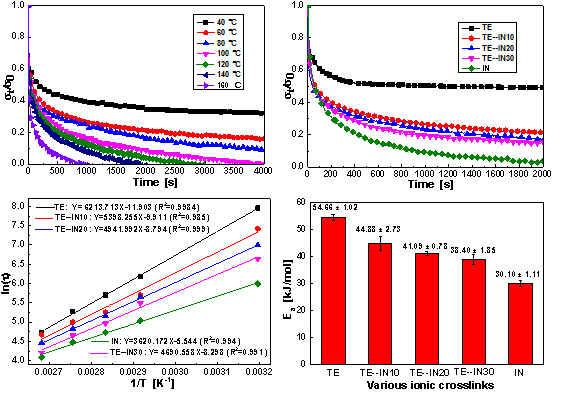
图3 VT-IR spectra of TE–IN10, (a) peak shift as heated from 40 to 120 °C by 10 °C/min, (b) peak shift during cooled from 120 to 40 °C by 10 °C/min. Variation of storage modulus E′ under various temperatures as a function of time, (c) IN samples, (d) TE–IN10 samples. Normalized stress-relaxation curves, (g) TE–IN10 samples under different temperatures and (h) elastomers containing various ionic bonds at 60 °C, (c) Linear fitting of relaxation time (τ) versus temperature according to the Arrhenius'' equation, (d) Stress relaxation activation energy (Ea) of samples with various ionic bonds.
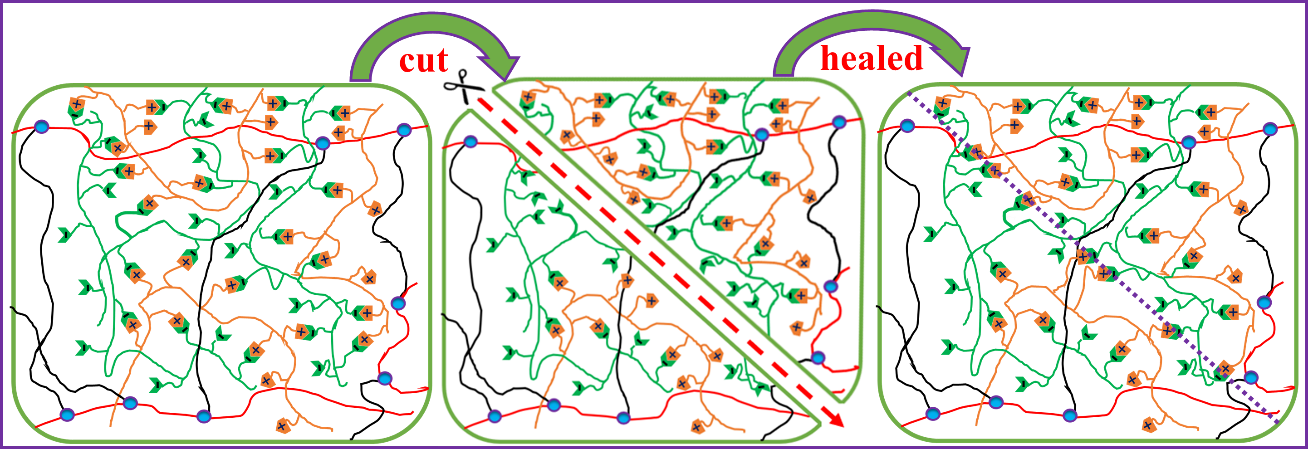
图4 Illustration of self-healing mechanism.

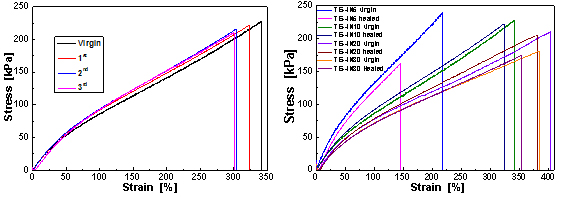
图5 (a) Repeated macro-repairing of damaged TE–IN10 samples. Stress-strain curves of virgin and self-healed silicone elastomers, (b) epeatedly healed TE–IN10 samples, (c) TE–IN10, TE–IN20 and TE–IN30 samples healed at 100 °C for 12 h.
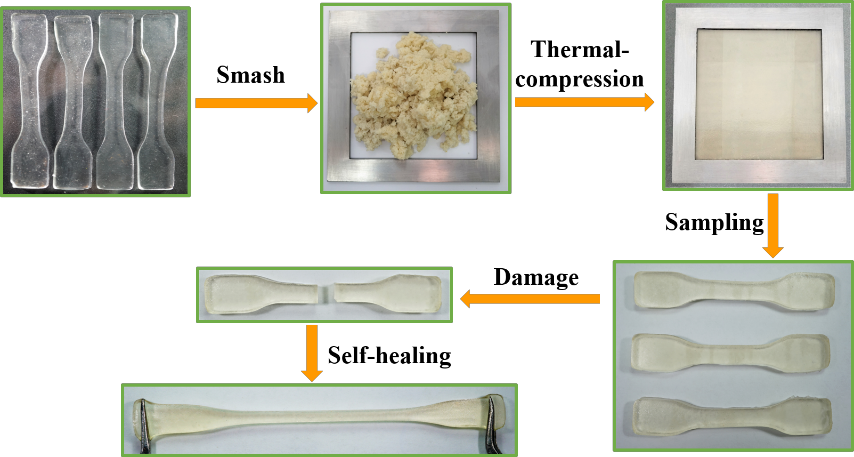
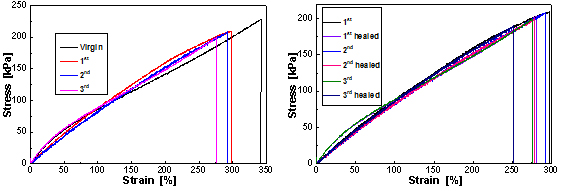
图6 Photographs for the reprocessing of TE–IN10 samples. (b-c) Stress-strain curves of virgin and reprocessed silicone elastomers, (b) repeatedly reprocessed TE–IN10 samples from 80 meshes, (c) self-healing properties of repeated reprocessed TE–IN10 samples.
制备的双交联有机硅弹性体具有优异的透明度。随着离子网络含量的增加,可见光透光率仍可达90%以上,多次高温热修复及回收后,可见光透光率仍可高达85%以上(图7)。弹性体具有优异的抗水解性能,即使80 ℃热水处理48h,弹性体的力学性能、E''和Tg均无明显降低,此外,经80 ℃热水处理48h,弹性体试样仍具有高达90 %以上的修复效率(图7)。
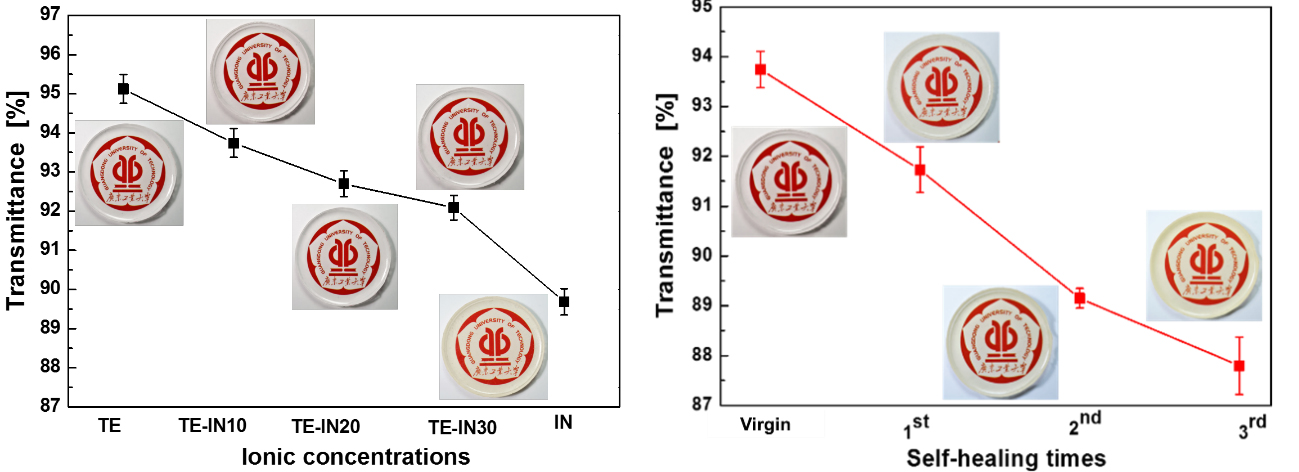

图7 Transmittance of (a) silicone elastomers containing various ionic bonds, (b) TE–IN10 samples with different healing times, (c) stress-strain curves and (d) storage modulus E'' and tan δ of TE–IN10 samples after hydro-thermally treated.
有机硅弹性体配方通过Form 2桌面式SLA 3D打印机,可打印出表面光滑和轮廓清晰的弹性体实体(如“GDUT”校名缩写,“齿轮”和“幸运星”),且有机颜料加入后不会影响固化速率。此外,3D打印出弹性体实体具有优异的自修复性能,多次修复后,自修复效率仍可达99%以上。表明3D打印层状堆叠不影响离子网络的分布及可逆解离—重组过程。


图8 (a) Schematic of SLA-based 3D printing. (b) 3D printed various geometries from TE–IN10 formula with different pigments, “GDUT” with 1.0 wt% RP–355, “Toothed Gears” in turn with 0.05 wt% BP–825, 0.05 wt% RP–355, and 1.0 wt.% BP–825, “Ascendant” with 0.05 wt% RP–355. (c) Photographs of self-healing 3D printed “Ascendant”. (d) Stress-strain curves of repeatedly self-healed 3D printed samples after 100 °C for 12 h.
因此,通过巯基-烯快速光聚合及热可逆离子交联的光—热双交联方式,成功地制备出优异透明度及抗水解性能的自修复可回收3D打印有机硅弹性体。对长时间打印出的复杂结构的弹性体功能件具有重要意义,节能环保,延长使用寿命、降低成本。为基于可逆动态离子缔合诱导的快速固化自修复有机硅材料提供一种可行的方案。
论文链接:https://doi.org/10.1016/j.cej.2020.124142
作者所在课题组的主研方向为高分子光化学,包括巯基-烯光点击化学、3D打印弹性体、3D打印自修复材料和多功能光引发剂,相关成果发表在《Progress in Polymer Science》、《Journal of Materials Chemistry C》《Polymer Chemistry》《Langmuir》、《Journal of Photochemistry & Photobiology A: Chemistry》、《ChemPhotoChem》(Angewandte Chemie International Edition, Chemistry - ChemPhotoChem)和《Progress in Organic Coatings》等该领域TOP国际主流期刊上。
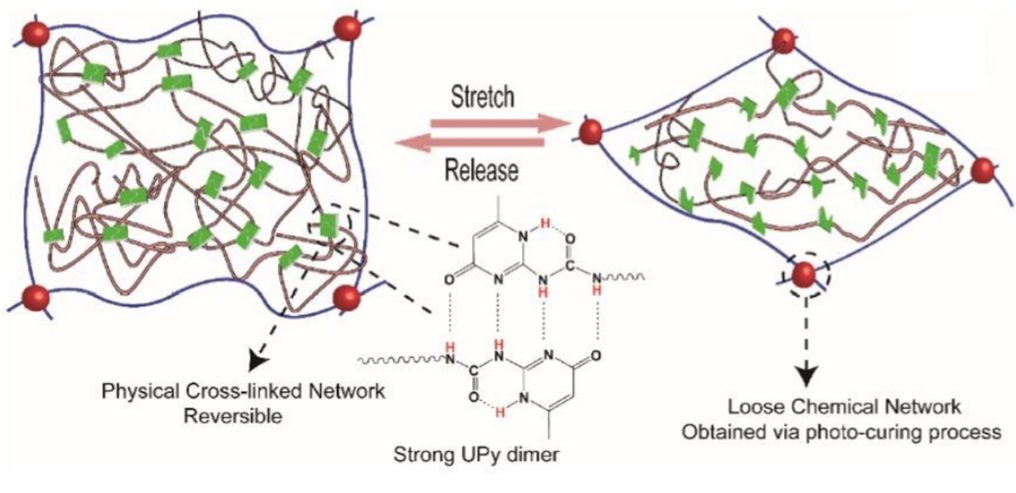
Yan Yang, Zushan Ye, Xiaoxuan Liu*, Jiahui Su*. A Healable Waterborne Polyurethane Synergistically Cross-Linked by Hydrogen Bonds and Covalent Bonds for Composite Conductor. Journal of Materials Chemistry C, 2020, DOI: 10.1039/D0TC00551G

J. Zhou, X. Allonas, X. Liu*. Zirconium Propoxide: A Coupling Agent for the Synthesis of Multifunctional Photoinitiators. ChemPhotoChem, 2018, 2(1): 18-21.
J. Zhou, X. Allonas, X. Liu*. Synthesis and Characterization of Organozirconiums with Type-II Photoinitiator Ligands as Multifunctional Photoinitiators for Free Radical Photopolymerization. Journal of Photochemistry and Photobiology Part A: Chemistry, 2018, 356: 580-586.
J. Zhou, X. Allonas, X. Liu.* Fluorinated Organozirconiums: Enhancement of Overcoming Oxygen Inhibition in the UV-curing Film. Progress in Organic Coatings, 2018, 120: 228-233.

Yang Y, Zhang T, Liu X*. et al. Preparation and photochromic behavior of spiropyran-containing fluorinated polyacrylate hydrophobic coatings. Langmuir, 2018, 4 (51): 15812-15819
Su J, Huang H, Cui Y, Liu X*, et al. A photo-induced nitroxide trapping method to prepare α, ω-heterotelechelic polymers. Polymer Chemistry, 2016, 7(14): 2511-2520.
Xiang, H.; Yin, J.; Lin, G.; Liu, X*. et al., Photo-crosslinkable, self-healable and reprocessable rubbers. Chemical. Engineering Journal. 2019, 358, 878-890.
H. Xiang, X. Wang, Z. Liu, L. Zhang*, X. Liu*, UV-curable, 3D printable and biocompatible silicone elastomers, Progress in Organic Coatings, 2019, 137: 105372.
https://doi.org/10.1016/j.porgcoat. 2019.105372
- 昆士兰大学乔瑞瑞教授团队 AFM:液态金属纳米颗粒赋能高分辨水凝胶3D打印 2025-12-01
- 中山大学陈文多课题组 AM:基于前端聚合无支撑3D打印可回收高性能CFRP材料 2025-11-15
- 理化所董智超、于存龙团队 Sci. Adv.:猪笼草界面设计显著提升液体稳定性 2025-11-15
- 西南大学曾建兵《Macromolecules》:聚多巴胺辅助构建高性能室温自修复导电弹性体 2025-10-19
- 南理工傅佳骏教授团队 AM:强韧如贝壳 - 兼具耐湿、室温自修复与高导热性能的仿生纳米复合材料 2025-10-06
- 江苏海洋大学李成杰团队 ACS AMI:可重加工自修复的橡胶基导热界面材料用于热管理 2025-07-20
- 俄罗斯研究新一代医用有机硅吸附剂 2009-06-25
